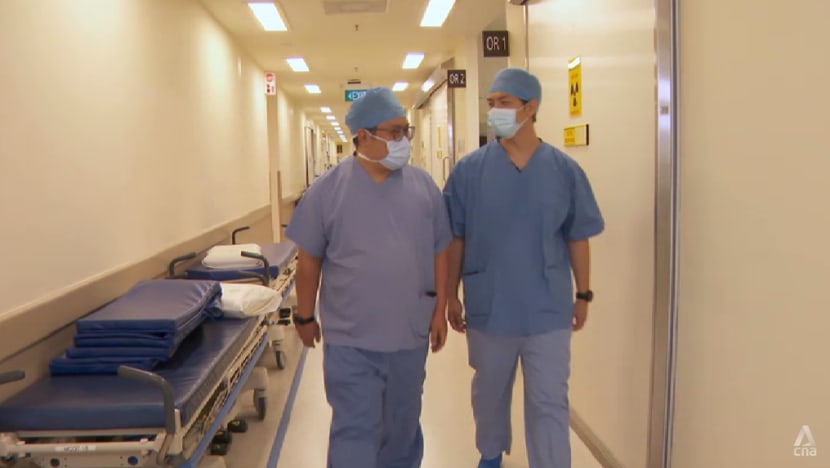New academy to help healthcare institutions adopt sustainable solutions, cut carbon emissions
The healthcare sector emits more carbon than sectors such as aviation and shipping.

The healthcare sector has come under the spotlight as it emits more carbon than sectors such as aviation and shipping.

This audio is generated by an AI tool.
SINGAPORE: Singapore's healthcare institutions will learn new ways to cut carbon emissions through a new academy.
The Centre for Healthcare Innovation's Sustainability Academy will offer training courses for professionals to help drive green efforts. It will also connect the public and private healthcare sectors to come up with possible green solutions.
The healthcare sector has come under the spotlight as it emits more carbon than sectors such as aviation and shipping.
DRIVING SUSTAINABLE PRACTICES
Hospitals in Singapore, for instance, use desflurane, commonly used as a general anaesthesia, in almost every operating theatre.
But there is a downside to its use, as it has a high global warming potential that is nearly 2,500 times greater than carbon dioxide.
To limit the impact on the environment, the National University Hospital (NUH) is taking various measures.
This includes putting reminders and stickers on vaporisers and machines, and reminding anaesthetists about the impact of the anaesthetic, said Dr Poh Pei Kee, a consultant anaesthetist at NUH.
The hospital has seen results - an estimated 98 per cent reduction from three years ago.
“To put into context, that's about 8 million kilometres that you can travel on the road, or removing 400 cars off the road of Singapore every year,” he said.
“In terms of financial savings, that has equated to about S$340,000 (US$252,000) per year saved.”
EQUIPPING STAKEHOLDERS WITH RELEVANT TRAINING
For other institutions that may need help in making such cuts, the new academy will provide support.
“We are not climate scientists but we need to get into that. We need to have a working knowledge of what carbon is, (and) how our processes actually affect the environment,” said Associate Professor Wong Hon Tym, clinical director at the Centre for Healthcare Innovation.
Assoc Prof Wong said the centre is pursuing sustainable development through the GreenGov.SG initiative under the Singapore Green Plan 2030. This includes reducing energy and water use by 10 per cent from the baselines by 2030, and reducing waste disposed of by 30 per cent by then.
These will act as standard for healthcare teams, he said.
“We hope eventually that some of those projects are going to make that impact that we hope for as well.”
NEED FOR AMBITIOUS TARGETS
Authorities believe more can be done to drive sustainable practices in the healthcare sector.
“Healthcare is both a cause, as well as a victim (of climate change) ” said Minister for Sustainability and the Environment Grace Fu.
“It's a cause, because of the consumables that we use, the way that we consume utilities, the way that we consume resources, (and) the way that we dispose of our waste.
“We are causing climate change but at the same time, we are also at the receiving end.”
She said that there is a need for mitigation efforts “as quickly, as much as we can”, and to set ambitious targets to protect the environment.
“So we need to think about how we can both mitigate the imprint of this sector on global warming as well as prepare,” she added.


















